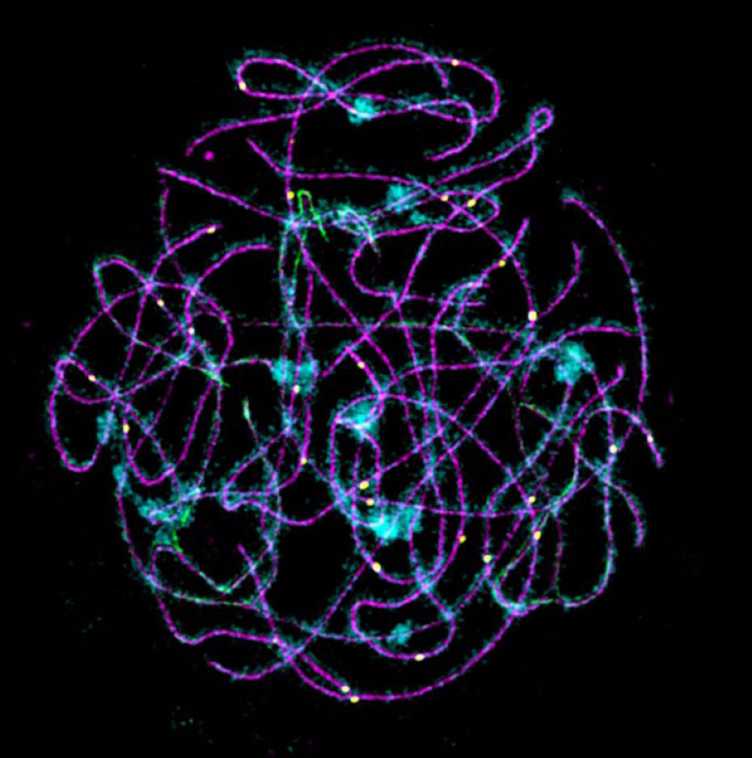Naturally evolved alleles of two proteins affect meiotic traits in a polyploid
Polyploids arise from genome duplication. They are important in agriculture and natural evolution, yet face challenges when they first form. A recent paper in PNAS from the Bomblies group sheds new light on naturally evolved genetic changes that likely helped a natural polyploid persist.

Genome duplication is important in the evolution of eukaryotic lineages, and also has great promise as a tool in agriculture. But genome duplication also poses challenges for the regular segregation of chromosomes in meiosis and thus for fertility – newly formed polyploids are often low fertility if not completely sterile. To survive, polyploid lineages must evolve to overcome initial challenges that accompany doubling the chromosome complement. Understanding how evolution can solve the challenge of segregating multiple homologous chromosomes promises fundamental insights into the mechanisms of genome maintenance and could open polyploidy as a more widely usable crop improvement tool. We previously identified candidate genes for meiotic stabilization of Arabidopsis arenosa, which has natural diploid and tetraploid variants. Here we show that derived versions of two genes under selection in tetraploid A. arenosa have effects relevant to the meiotic stabilization in tetraploids.
Link to the paper in external page "PNAS"